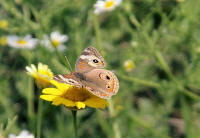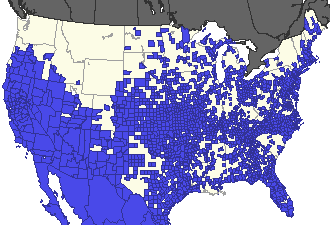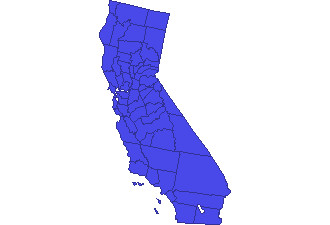|
United States Range Map |
|
California Range Map |
|
Adult Sexes
Similar |
 |
|
|
|
|
|
|
Identification: |
|
Life history:
|
|
Upperside is brown.
Forewing with 2 orange cell bars and 2 eyespots; part
of white subapical band appears in the largest, lower
eyespot. Hindwing
has 2 eyespots; upper one is largest and contains a magenta
crescent. Underside of hindwing is brown or tan in the wet
season (summer) form and rose-red in the dry season (fall)
form. |
|
Males perch during the day on low plants or bare ground to
watch for females, flying periodically to patrol or to chase
other flying insects. Females lay eggs singly on leaf buds
or on upperside of host plant leaves. Caterpillars are
solitary and eat leaves. Caterpillars and adults
overwinter but only in
the south. |
|
Flight: |
|
Wing Span: |
|
Two to three broods from May-October, throughout the year in
the Deep South. |
|
1 5/8 - 2 3/4 inches (4.2 - 7 cm). |
|
Caterpillar Hosts: |
|
Adult Food: |
|
Plants from the snapdragon family including snapdragon
(Antirrhinum) and toadflax (Linaria); the plantain family
including plantains (Plantago); and the acanthus family
including ruellia (Ruellia nodiflora). |
|
Favorite nectar sources are composites including aster,
chickory, gumweed, knapweed, and tickseed sunflower.
Dogbane, peppermint, and other flowers are also visited. |
|
Habitat: |
|
Season: |
|
Open, sunny areas with low vegetation and some bare ground. |
|
Two to three broods from May-October, throughout the year in
the Deep South. |
|
Remarks: |
|
Conservation: |
|
|
|
Not required.
NatureServe Global Status:
G5 - Demonstrably secure globally, though it may be quite
rare in parts of its range, especially at the periphery.
Management needs: None reported.
|
|
Sources used to
Construct this Page: |
|
|
|
|




